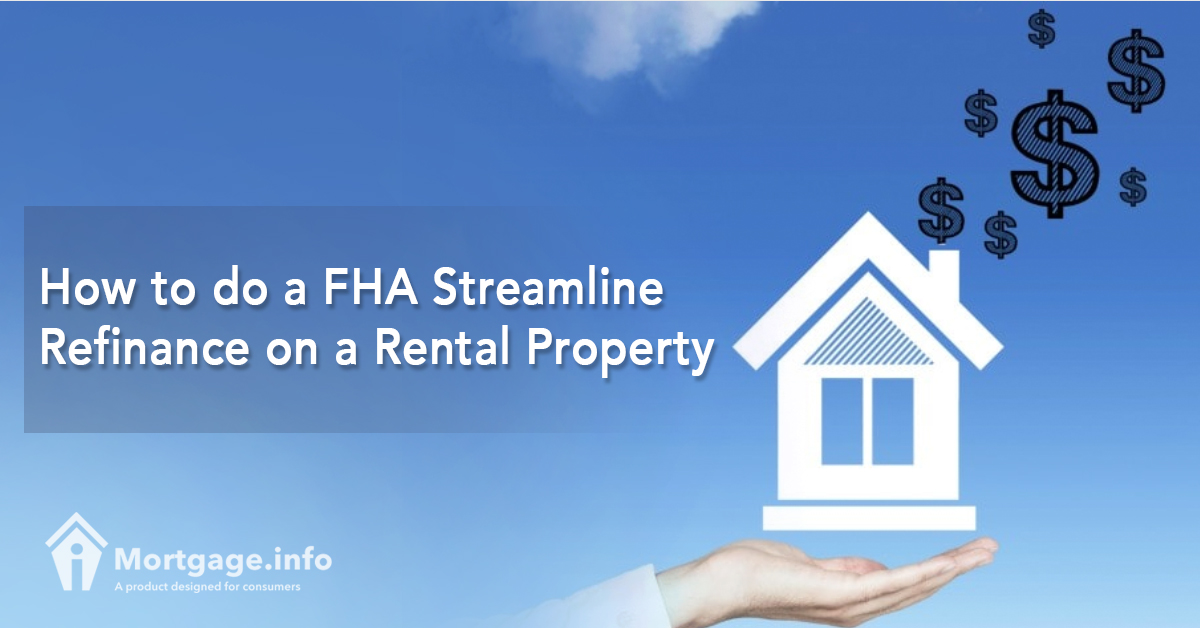You know the FHA loan as an owner occupied loan program. You used it to purchase your existing home, but now you do not live there. If it has been a few years and you want to refinance because rates are low or because you are underwater on the home, you have options. You can even use the FHA Streamline Refinance to lower your interest rate as an investment property. This is especially helpful or those who owe more than their home is worth right now. The streamline FHA program does not require you to live in the home. It also does not require a new appraisal. However, you do have to meet the other requirements of the program in order to qualify.
Credit or Non-Credit Qualifying
First, you need to determine if you need a credit qualifying or non-credit qualifying refinance. The main difference is whether the lender pulls your credit. This is an obvious benefit for many borrowers. In order to use the non-credit qualifying refinance, you must meet the following requirements:
- You must have made six mortgage payments between the purchase date and application for the refinance
- You cannot have any late housing payments within the last year
- 210 days or 7 months must have passed since you purchased the home
If you meet the above requirements, you will probably not have to verify your credit, income, or employment.
If, however, your payment increases because of a higher interest rate or you take cash out of the equity of your home, the lender must verify your credit. If any of the following pertain to you, the credit qualifying refinance is necessary:
- It has not been 210 days since you purchased the home
- You have not made at least 6 mortgage payments on the loan
- Your payment increases more than 20 percent after the refinance
- You change borrowers on the loan which triggers the due-on-sale clause
You may still be eligible for the FHA Streamline Refinance, but you will have to verify a little more than you would with a non-credit qualifying refinance.
Qualifying for the FHA Streamline
Qualifying for the FHA Streamline Refinance is simple. If you are eligible for the non-credit qualifying loan, you only have to verify:
- No late housing payments in the last 3 months
- Maximum of one late housing payment in the 9 months preceding the last 3 months
- Proof that you made at least 6 mortgage payments on the current loan
- Prove you receive a benefit from the refinance, such as a lower payment (typically 0.5% satisfies this requirement)
If you do not qualify for the non-credit qualifying refinance, you may have to allow the lender to pull your credit.
No Appraisal Required
The best thing about the FHA Streamline Refinance whether credit qualifying or non-credit qualifying is you do not need an appraisal. This means you could be completely upside on your loan and still refinance. The FHA focuses on your housing payment history rather than the value of your home. If you pay your current loan on time and your new streamline payment will be lower than your current payment, you will likely continue to make timely payments. It works to the benefit of the FHA and the subsequent lender to offer you a refinance with a lower payment.
You Cannot Receive Cash
With the FHA Streamline Refinance, you cannot receive cash in hand. This triggers a cash-out refinance and requires full verification of all aspects of your loan. Instead, you can only refinance the outstanding principal balance of your loan plus the cost of the upfront mortgage insurance premium. If you need help with the closing costs, you have to negotiate a no-closing cost loan with the lender. The FHA forbids borrowers to roll closing costs into the streamline loan.
You will, however, receive a refund of the upfront MIP you paid on your original FHA loan if you originated that loan within the last 36 months. The amount you can receive as a refund depends on the length of time you held the loan. Since you are not eligible for the first 7 months of the loan, the refund starts at 68%. This means you receive 68% of the amount you paid at the closing for your current loan back in a refund. As each month passes, the amount you receive decreases by 2%. By the 36th month, you can receive 10% of the amount you paid back.
The MIP refund does not result in cash in your hand, though. The lender applies the refund to the current upfront MIP you must pay at the closing. It decreases the amount of cash you must bring to the closing or roll into your loan amount.
Applying for the FHA Streamline Loan
Once you know you meet the requirements for the FHA Streamline Refinance, you can find a lender. You do not have to use your current lender, either. In fact, you should shop around to check out what different lenders have to offer. Just like any other loan program, the FHA puts the basic requirements in place; however, individual lenders can add their own overlays. What some lenders are willing to accept others may not agree. Even if you find three lenders willing to approve your loan, they each probably offer different interest rates and closing costs. Take the time to compare each offer to determine which one would offer you the most savings.
Refinancing your investment property with a current FHA loan on it is simple with the FHA Streamline Refinance. As long as you can prove there is a net tangible benefit, meaning a lower payment or less risky term (ARM to fixed), you should be eligible for the program. Make sure you wait until you have all on-time mortgage payments and when you made at least 6 mortgage payments in order to take advantage of the non-credit qualifying refinance program.

